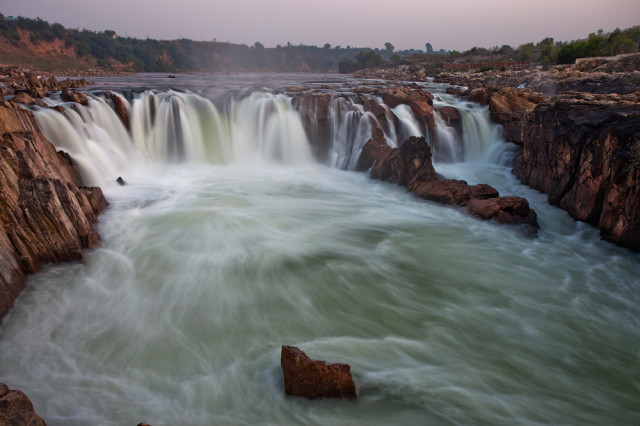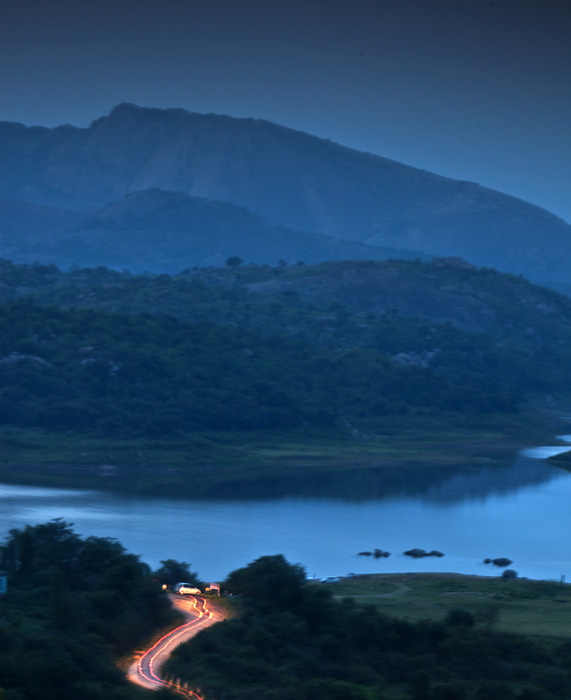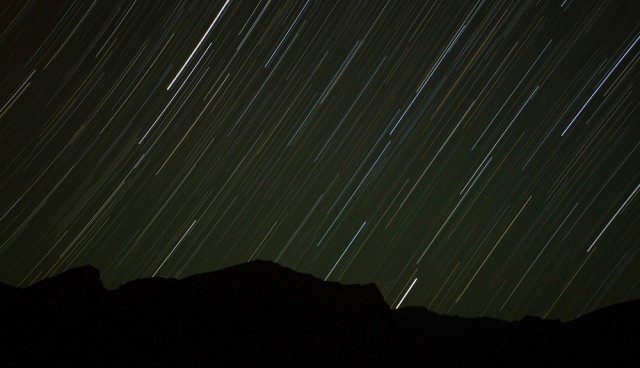Travel Photography: Slow shutter speeds
This article appeared in August issue of Terrascape, a travel magazine for which I am an editorial consultant and also write a column on photography. Read all the earlier earlier travel photography articles on India Travel Blog.
The technology of capturing images has come a long way since the time photography was invented. However, despite the advances, they still remain a long way behind the nature’s image capturing technology – the eyes. Cameras have not yet become as sensitive to light as our eyes are. While this poses several limitations, this also allows the cameras to capture some interesting images that eyes can’t witness.
When photographing objects in low-light, such as a landscape well after sunset or a dimly lit room, it takes a long time for a camera to record the image, thanks to the limited sensitivity of the cameras to the light. This means the shutter has to remain open for not just a fraction of a second that we are normally used to, but a few seconds to even a few minutes before the picture gets taken. Due to this, objects in motion register blurred or as streaks in the image, creating interesting effects. Let’s explore how we take advantage of this.
To be able to make images with long exposure duration (typically called slow shutter speeds), you require camera that permits you to set the shutter speeds manually. This feature is available in all DSLR cameras and many advanced aim-and-shoot cameras. You also require a sturdy tripod, as the camera can’t be held steady with your hands for such long durations.
Let’s explore some subjects that offer some interesting effects with slow shutter speeds.
Waterfalls. When you photograph a waterfall at shutter speeds in the range of 0.2 to 2 seconds duration, the movement of the water gets captured in your image and the flowing water gives a silky effect. This looks much more beautiful than waterfalls photographed at normal shutter speeds, where the fall appears frozen, as if the water is hanging mid-air and not moving.
Moving Vehicles. The headlights and tail lights of moving vehicles in the night appear as glowing streaks when you photograph them at slow shutter speeds, typically longer than a few seconds. In a road with two-way traffic, you see the lights divided into red streaks for vehicles moving away from you (due to the colour of tail lights) and white streaks for vehicles moving towards you (due to headlights). The moving vehicles themselves may not appear as defined objects in the image, but the buildings and immovable objects in the frame appear perfectly normal.
Star Trails. This is an extreme case of photographing at slow shutter speeds, where the duration of exposure can stretch for as long as ten minutes to even a few hours. Due to earth’s rotation, the position of stars keeps changing in the sky every moment, similar to the way the position of the sun shifts during the day. If you point your camera towards the sky in the night and leave the shutter open for more than five minutes, you can register this movement of stars, which appears as bright lines in a dark sky. Make sure you are at a dark place without too much light pollution, which allows you to capture maximum number of stars in the sky.


